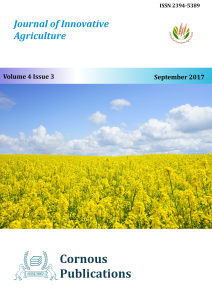
Journal of Innovative Agriculture
Peer Reviewed Open Access Journal
ISSN: 2394-5389 NAAS: 4.05
Submit Manuscript
Peer Reviewed Open Access Journal
ISSN: 2394-5389 NAAS: 4.05
Submit ManuscriptOPEN ACCESS | Published on : 27-Sep-2017 | Pages : 1-5
OPEN ACCESS | Published on : 27-Sep-2017 | Pages : 6-10
OPEN ACCESS | Published on : 27-Sep-2017 | Pages : 11-15
OPEN ACCESS | Published on : 27-Sep-2017 | Pages : 16-20
OPEN ACCESS | Published on : 27-Sep-2017 | Pages : 1-8
